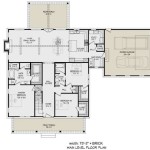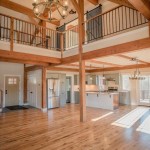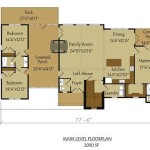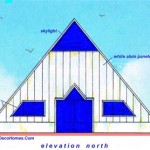Simple Tree House Plans provide detailed instructions and materials lists for constructing a tree house that is both functional and safe. These plans are typically designed for beginners or those with limited carpentry experience, making them an accessible option for anyone looking to build their own tree house. One example of a simple tree house plan is a basic platform design, which consists of a wooden platform suspended between sturdy tree branches.
The design process for simple tree houses involves selecting appropriate trees, determining the size and shape of the platform, and choosing materials that are suitable for outdoor use. It’s important to ensure that the plans adhere to safety regulations and local building codes. By following these plans, individuals can create a personalized tree house that offers a unique and enjoyable outdoor space.
In the following sections, we will explore various simple tree house plans, discuss materials and construction techniques, and provide tips for ensuring safety and minimizing environmental impact.
When considering simple tree house plans, it’s essential to remember these 10 key points:
- Choose sturdy trees
- Determine platform size and shape
- Select weather-resistant materials
- Follow safety regulations
- Use appropriate tools and techniques
- Ensure stability and support
- Consider accessibility and entry options
- Incorporate safety features (e.g., railings)
- Respect the environment
- Enjoy the process and the final product
By following these guidelines, you can create a simple tree house that is both safe and enjoyable for years to come.
Choose sturdy trees
Selecting the right trees is crucial for the safety and stability of your tree house. Look for healthy trees with strong trunks and branches that are free of decay or damage. The trees should be mature enough to support the weight of the tree house and any occupants, and they should be well-rooted to withstand strong winds.
Some of the best tree species for tree houses include oak, maple, and cedar. These trees are known for their strength and durability, and they have dense branches that can provide good support. However, it’s important to note that even the strongest trees can be weakened by disease or damage, so it’s always best to have a qualified arborist inspect the trees before you start building.
Once you have selected the trees that you want to use, you need to determine the best location for the tree house. The location should be level and well-drained, and it should be away from any power lines or other hazards. You should also make sure that the location is convenient for access and maintenance.
Once you have chosen the trees and the location, you can start planning the design of your tree house. Be sure to consider the size and shape of the platform, the height of the tree house, and the materials that you will be using. With careful planning and execution, you can build a sturdy and safe tree house that will provide years of enjoyment.
Determine platform size and shape
The size and shape of the platform will depend on the number of people who will be using the tree house, the activities that will be taking place, and the available space. A good rule of thumb is to make the platform at least 4 feet wide and 6 feet long for each person who will be using it. If you plan on using the tree house for activities such as sleeping or eating, you may want to make the platform even larger.
- Platform shape
The shape of the platform can be anything you want, but the most common shapes are square, rectangle, and octagon. Square and rectangular platforms are the easiest to build, while octagonal platforms offer more space and a more interesting look. When choosing the shape of the platform, keep in mind the size of the trees that you are using and the available space.
- Platform height
The height of the platform will depend on the height of the trees and your personal preference. A good rule of thumb is to make the platform about 6 feet off the ground. This will give you enough headroom to stand up and move around comfortably, but it will not be too high to climb.
- Platform access
You will need to decide how you will access the platform. The most common options are a ladder, a staircase, or a rope ladder. Ladders are the easiest to build, but they can be difficult to climb, especially if you are carrying something. Staircases are more comfortable to climb, but they are more difficult to build. Rope ladders are a good option if you want to be able to easily adjust the height of the platform.
- Platform safety features
Once you have determined the size, shape, and height of the platform, you need to add some safety features. These features include railings, a safety net, and a roof. Railings will help to prevent people from falling off the platform, and a safety net will help to catch people if they do fall. A roof will help to protect people from the sun and rain.
By following these tips, you can determine the perfect size and shape for your tree house platform.
Select weather-resistant materials
When choosing materials for your tree house, it is important to select weather-resistant materials that can withstand the elements. This will help to ensure that your tree house lasts for many years to come.
- Wood
Wood is a popular choice for tree houses because it is strong and durable. However, it is important to choose a type of wood that is resistant to rot and decay. Some good options include cedar, redwood, and cypress.
- Metal
Metal is another good option for tree houses because it is strong and durable. However, it is important to choose a type of metal that is resistant to rust and corrosion. Some good options include aluminum and galvanized steel.
- Plastic
Plastic is a good choice for tree houses because it is lightweight and weather-resistant. However, it is important to choose a type of plastic that is UV-resistant. Some good options include polyethylene and polypropylene.
- Composite materials
Composite materials are made from a combination of wood and plastic. They are strong and durable, and they are also weather-resistant. Some good options include Trex and Fiberon.
Once you have selected the materials for your tree house, be sure to properly seal and protect them from the elements. This will help to extend the life of your tree house and keep it looking its best.
Follow safety regulations
When building a tree house, it is important to follow all applicable safety regulations. These regulations vary from state to state and county to county, so it is important to check with your local building department to determine what regulations apply to your project.
Some of the most common safety regulations that apply to tree houses include:
- The tree house must be built on a sturdy tree that is in good health. The tree should be free of any major defects, such as rot, decay, or cracks.
- The tree house must be built to code. This means that it must meet all of the structural requirements for a building of its size and type.
- The tree house must have a safe means of access. This could be a ladder, a staircase, or a rope ladder. The access point should be designed to prevent people from falling.
- The tree house must have a safety railing. The railing should be at least 36 inches high and should be strong enough to prevent people from falling off the platform.
- The tree house must be inspected regularly. The inspection should be conducted by a qualified inspector to ensure that the tree house is safe for use.
Paragraph after details
By following these safety regulations, you can help to ensure that your tree house is a safe and enjoyable place for everyone to use.
Use appropriate tools and techniques
When building a tree house, it is important to use the appropriate tools and techniques to ensure that the structure is safe and sturdy. This includes using the right tools for the job, such as a saw, drill, and hammer. It also includes using the correct techniques, such as using nails or screws to secure the wood together. Additionally, it is important to follow the instructions in the plans carefully and to make sure that all of the steps are completed correctly.
One of the most important things to consider when building a tree house is the type of wood that you will be using. The wood should be strong and durable, and it should be able to withstand the elements. Some good options for tree house wood include cedar, redwood, and cypress. Once you have selected the wood, you will need to cut it to the correct size and shape. This can be done using a saw or a power saw.
Once the wood is cut, you will need to assemble the tree house. This can be done using nails or screws. It is important to use the correct size and type of nails or screws for the job. You will also need to make sure that the wood is securely attached together. Once the tree house is assembled, you will need to add a roof and a floor. The roof can be made from a variety of materials, such as shingles, metal, or tar paper. The floor can be made from wood or plywood.
Once the tree house is complete, you will need to add some finishing touches. This could include adding a ladder or stairs to access the tree house, adding a railing for safety, and adding some furniture or decorations. By following these tips, you can build a safe and sturdy tree house that you and your family can enjoy for years to come.
In addition to using the appropriate tools and techniques, it is also important to be aware of the potential hazards involved in building a tree house. These hazards include falling from the tree house, being hit by a falling branch, or being injured by a tool. It is important to take precautions to avoid these hazards, such as wearing a hard hat, using a safety harness, and being aware of your surroundings.
Ensure stability and support
Once you have chosen the location and materials for your tree house, you need to ensure that it is stable and supported. This means making sure that the tree house is properly attached to the tree and that it is able to withstand the weight of the occupants and any equipment or furniture that will be stored inside.
- Secure the tree house to the tree. The tree house should be securely attached to the tree using bolts or lag screws. The bolts or screws should be long enough to penetrate the tree trunk by at least 3 inches. The tree house should also be attached to the tree at multiple points to prevent it from swaying or twisting.
- Use sturdy materials. The materials used to build the tree house should be strong and durable. The wood should be at least 2 inches thick and the metal should be at least 1/4 inch thick. The materials should also be treated to resist rot and decay.
- Build a strong foundation. The foundation of the tree house should be strong enough to support the weight of the structure and the occupants. The foundation can be made from concrete, wood, or metal. If the foundation is made from wood, it should be treated to resist rot and decay.
- Add bracing. Bracing can be added to the tree house to make it more stable and resistant to wind and other forces. Bracing can be made from wood or metal and should be installed at an angle to the main supports of the tree house.
By following these tips, you can ensure that your tree house is stable and supported and that it will be able to withstand the elements and the weight of the occupants.
Consider accessibility and entry options
When designing your tree house, it is important to consider accessibility and entry options. This includes making sure that the tree house is accessible to people of all ages and abilities, and that there is a safe and easy way to enter and exit the tree house.
- Choose a location that is easy to access. The tree house should be located in a spot that is easy to get to, both for people and for materials. Avoid locations that are difficult to reach, such as areas with steep slopes or dense vegetation.
- Provide a safe and easy way to enter and exit the tree house. This could be a ladder, a staircase, or a rope ladder. The entry point should be designed to prevent people from falling, and it should be wide enough to accommodate people of all sizes.
- Consider the needs of people with disabilities. If you are building a tree house for people with disabilities, you will need to make sure that the tree house is accessible to them. This may include adding ramps, widening doorways, and installing grab bars.
- Make sure that the tree house is safe for children. If you are building a tree house for children, you will need to make sure that it is safe for them to use. This includes adding safety railings, covering any sharp edges, and making sure that the tree house is not too high off the ground.
By following these tips, you can ensure that your tree house is accessible to people of all ages and abilities, and that there is a safe and easy way to enter and exit the tree house.
Incorporate safety features (e.g., railings)
In addition to ensuring that your tree house is stable and supported, you also need to incorporate safety features to protect the occupants from falls and other injuries. Some important safety features to consider include:
- Railings
Railings are essential for preventing people from falling off the platform of the tree house. Railings should be at least 36 inches high and should be strong enough to withstand the weight of an adult. The railings should also be spaced close enough together to prevent children from slipping through.
- Safety net
A safety net can be installed under the platform of the tree house to catch people if they fall. Safety nets should be made from a strong, durable material, such as nylon or polyethylene. The safety net should be installed according to the manufacturer’s instructions.
- Roof
A roof will help to protect the occupants of the tree house from the sun and rain. The roof can be made from a variety of materials, such as shingles, metal, or tar paper. The roof should be sloped to allow water to drain off.
- Ladder or staircase
A ladder or staircase is necessary for accessing the platform of the tree house. The ladder or staircase should be sturdy and should have handrails for safety. The ladder or staircase should also be designed to prevent people from falling.
By incorporating these safety features into your tree house, you can help to ensure that the tree house is a safe and enjoyable place for everyone to use.
Respect the environment
When building a tree house, it is important to respect the environment. This means taking steps to minimize the impact of the tree house on the tree and the surrounding ecosystem.
One of the most important things to do is to choose a tree that is healthy and strong enough to support the tree house. Avoid trees that are diseased, damaged, or have weak branches. You should also avoid trees that are located in sensitive areas, such as wetlands or near water bodies.
Once you have selected a tree, you need to take care to minimize the damage to the tree when building the tree house. This means using techniques that do not damage the tree’s bark or roots. You should also avoid using nails or screws that could damage the tree’s interior.
In addition to protecting the tree, you should also take steps to minimize the impact of the tree house on the surrounding ecosystem. This means avoiding the use of harmful chemicals or materials that could pollute the environment. You should also make sure that the tree house does not block sunlight or access to water for other plants and animals.
By following these tips, you can help to ensure that your tree house is built in a way that respects the environment.
Enjoy the process and the final product
Building a tree house can be a fun and rewarding experience. By following the steps outlined in this article, you can build a tree house that is safe, sturdy, and enjoyable for everyone to use. Here are a few tips to help you enjoy the process and the final product:
- Take your time and enjoy the process. Building a tree house should be an enjoyable experience, so don’t rush the process. Take your time to choose the right tree, design the tree house, and gather the materials. The more you enjoy the process, the more you will enjoy the final product.
- Get help from friends and family. Building a tree house can be a great way to spend time with friends and family. Ask them to help you with the construction, and make it a fun and social event.
- Be creative and unique. Don’t be afraid to let your creativity shine through when building your tree house. Add personal touches and unique features to make it your own. The more creative you are, the more you will enjoy the final product.
- Take pride in your work. Once you have finished building your tree house, take a step back and admire your work. You have created something special that you can enjoy for years to come. Be proud of your accomplishment, and share it with your friends and family.
Building a tree house can be a rewarding experience for people of all ages. By following the tips in this article, you can build a tree house that is safe, sturdy, and enjoyable for everyone to use. So what are you waiting for? Get started today!










Related Posts








